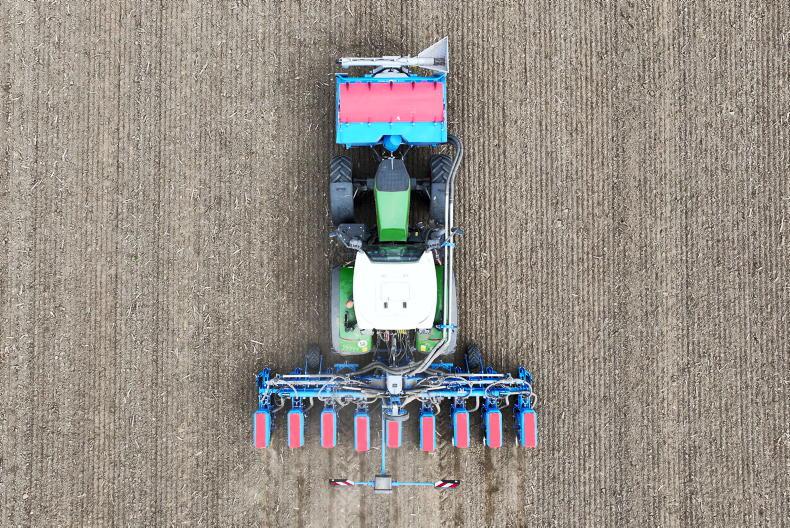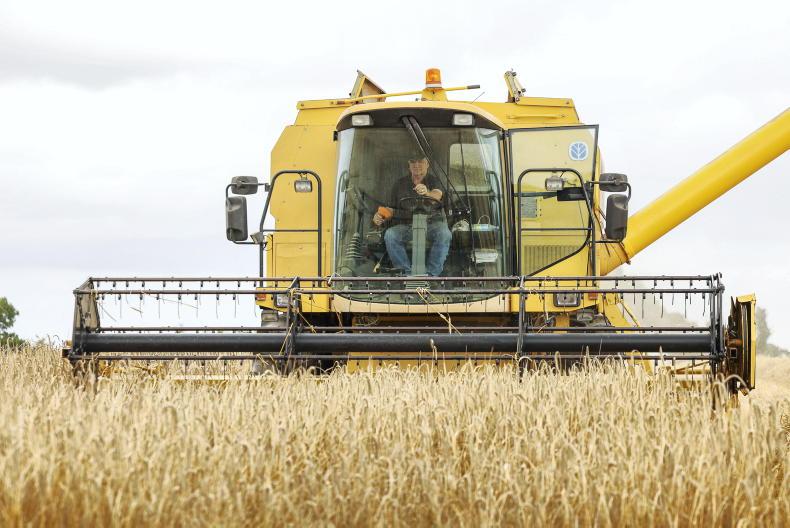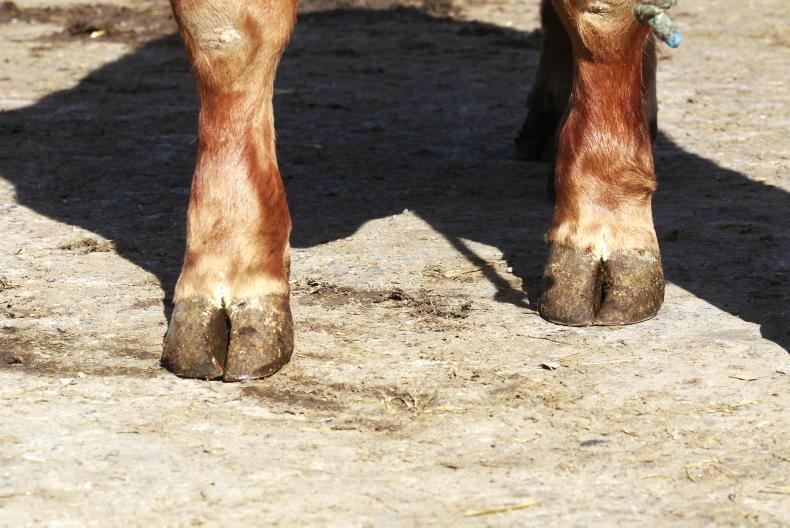There is a real defeatist mood amongst farmers this week. All along there was hope that weather would improve, cows could go out and all would be well.
But this week there is definitely a loss of hope when looking at the weather forecast for another week of wet, intermittent rain, which leaves farmers with no choice but to keep animals indoors for another prolonged period.
So far this spring, the drier farms were getting away with meeting targets through on/ off grazing and hard work getting cows to grass, while the heavier farms found pockets here and there to give cows the unfamiliar taste of grass.
Now, even the dry farms are struggling, with many farms looking at the back wall of the silage pit that might not have been seen in five or six years.
Farmers are looking out at fields of grass and full slurry tanks, knowing there is a backlog of work to be done such as slurry, fertiliser, fencing etc, and wondering how and when this will all be done.
As the weather doesn’t seem to be changing in the next week or so, some farmers have turned to feeding fodder stretcher straights, such as palm kernel or soya hulls, and some farmers can get their hands on beet also.
These are relatively cheap supplements which will help stretch silage usage over the next week to ten days.
Feeding palm kernel and beet pulp as a supplementation feed choice won’t be sufficient to maintain milk production when compared to parlour concentrate and soya hulls.
Careful consideration must be given when selecting supplements based on feed cost, feeding method and production response.
Continue to get cows out as much as possible on/off grazing to keep grass in the diet.Calculate silage stocks and think about where your fodder source will come from if wet weather continues.Soya hulls and beet pulp can be supplemented at lower costs without hindering production.Drier farms need to look at the first grazed paddocks and make a plan for second rotation.Kevin Moloney – Knockanore, Co Waterford
Cows are out grazing but just about. We have 69% of the farm grazed to date, with cows out most days and some nights.
We’re doing everything we can to keep cows at grass, as we have run out of good quality bales. Cows are back eating pit silage now and it’s hitting them.
We’re giving cows a bigger area now just to do less damage but cleanouts are taking a hit.
There is slurry out now on most of the grazed paddocks except for this week as weather won’t allow. There was 25 units of urea spread on any paddocks that didn’t receive slurry at the start of March.
Thirty units are being spread now on the paddocks that have got slurry.
Stocking Rate (cow/ha) 2.7
Growth Rate (kg/day) 20
Average Farm Cover (kg/ha) 880
Yield (l/cow) 23
Fat% 4.98
Protein% 3.4
Milk Solids (kg/cow) 1.92
Concentrates 5kg
Shane Hegarty – Craanlusky, Co Carlow
This spring has been a nightmare from a grazing perspective. Cows have 84% of the farm grazed, and we’re trying to get grass into cows after both milkings.
There is about 1,000kg DM/ha back on the first three paddocks grazed, but it tails off after that. Hopefully we can start the second rotation next week.
Cows were housed full time two weeks ago and that had a massive hit on milk performance. We’re slowly climbing out of it, but the weather isn’t helping.
At the end of January, we spread as much of the milking platform as we could with 2,000 gallons of slurry. Everywhere has got about a bag of urea to the acre so far, split in two applications.
Stocking Rate (cow/ha) 3.0
Growth Rate (kg/day) 23
Average Farm Cover (kg/ha) 625
Yield (l/cow) 23.5
Fat% 4.88
Protein% 3.36
Milk Solids (kg/cow) 1.93
Concentrates 5kg
Michael Doran – Duncormick, Co Wexford
Spring grazing has been a disaster so far, with cows very unsettled. We’re on a heavy farm here and water tables are high, so we have water coming from both ends.
There is about 46% of the farm grazed and we’re just getting out when we can. We have roughly ten days left in silage stocks, so it’s more about rationing silage at this point.
We’ve had two inches of rain since Sunday evening and there’s no change in the forecast for the next week.
There is about 900kg DM/ha coming back on paddocks that have been grazed, and there are covers of up to 3,000kg DM/ha on the farm.
When the weather does come right there’s going to be a lot of work correcting that.
Stocking Rate (cow/ha) 2.9
Growth Rate (kg/day) 33
Average Farm Cover (kg/ha) 1,417
Yield (l/cow) 21.9
Fat% 4.63
Protein% 3.5
Milk Solids (kg/cow) 1.78
Concentrates 4kg
There is a real defeatist mood amongst farmers this week. All along there was hope that weather would improve, cows could go out and all would be well.
But this week there is definitely a loss of hope when looking at the weather forecast for another week of wet, intermittent rain, which leaves farmers with no choice but to keep animals indoors for another prolonged period.
So far this spring, the drier farms were getting away with meeting targets through on/ off grazing and hard work getting cows to grass, while the heavier farms found pockets here and there to give cows the unfamiliar taste of grass.
Now, even the dry farms are struggling, with many farms looking at the back wall of the silage pit that might not have been seen in five or six years.
Farmers are looking out at fields of grass and full slurry tanks, knowing there is a backlog of work to be done such as slurry, fertiliser, fencing etc, and wondering how and when this will all be done.
As the weather doesn’t seem to be changing in the next week or so, some farmers have turned to feeding fodder stretcher straights, such as palm kernel or soya hulls, and some farmers can get their hands on beet also.
These are relatively cheap supplements which will help stretch silage usage over the next week to ten days.
Feeding palm kernel and beet pulp as a supplementation feed choice won’t be sufficient to maintain milk production when compared to parlour concentrate and soya hulls.
Careful consideration must be given when selecting supplements based on feed cost, feeding method and production response.
Continue to get cows out as much as possible on/off grazing to keep grass in the diet.Calculate silage stocks and think about where your fodder source will come from if wet weather continues.Soya hulls and beet pulp can be supplemented at lower costs without hindering production.Drier farms need to look at the first grazed paddocks and make a plan for second rotation.Kevin Moloney – Knockanore, Co Waterford
Cows are out grazing but just about. We have 69% of the farm grazed to date, with cows out most days and some nights.
We’re doing everything we can to keep cows at grass, as we have run out of good quality bales. Cows are back eating pit silage now and it’s hitting them.
We’re giving cows a bigger area now just to do less damage but cleanouts are taking a hit.
There is slurry out now on most of the grazed paddocks except for this week as weather won’t allow. There was 25 units of urea spread on any paddocks that didn’t receive slurry at the start of March.
Thirty units are being spread now on the paddocks that have got slurry.
Stocking Rate (cow/ha) 2.7
Growth Rate (kg/day) 20
Average Farm Cover (kg/ha) 880
Yield (l/cow) 23
Fat% 4.98
Protein% 3.4
Milk Solids (kg/cow) 1.92
Concentrates 5kg
Shane Hegarty – Craanlusky, Co Carlow
This spring has been a nightmare from a grazing perspective. Cows have 84% of the farm grazed, and we’re trying to get grass into cows after both milkings.
There is about 1,000kg DM/ha back on the first three paddocks grazed, but it tails off after that. Hopefully we can start the second rotation next week.
Cows were housed full time two weeks ago and that had a massive hit on milk performance. We’re slowly climbing out of it, but the weather isn’t helping.
At the end of January, we spread as much of the milking platform as we could with 2,000 gallons of slurry. Everywhere has got about a bag of urea to the acre so far, split in two applications.
Stocking Rate (cow/ha) 3.0
Growth Rate (kg/day) 23
Average Farm Cover (kg/ha) 625
Yield (l/cow) 23.5
Fat% 4.88
Protein% 3.36
Milk Solids (kg/cow) 1.93
Concentrates 5kg
Michael Doran – Duncormick, Co Wexford
Spring grazing has been a disaster so far, with cows very unsettled. We’re on a heavy farm here and water tables are high, so we have water coming from both ends.
There is about 46% of the farm grazed and we’re just getting out when we can. We have roughly ten days left in silage stocks, so it’s more about rationing silage at this point.
We’ve had two inches of rain since Sunday evening and there’s no change in the forecast for the next week.
There is about 900kg DM/ha coming back on paddocks that have been grazed, and there are covers of up to 3,000kg DM/ha on the farm.
When the weather does come right there’s going to be a lot of work correcting that.
Stocking Rate (cow/ha) 2.9
Growth Rate (kg/day) 33
Average Farm Cover (kg/ha) 1,417
Yield (l/cow) 21.9
Fat% 4.63
Protein% 3.5
Milk Solids (kg/cow) 1.78
Concentrates 4kg










SHARING OPTIONS